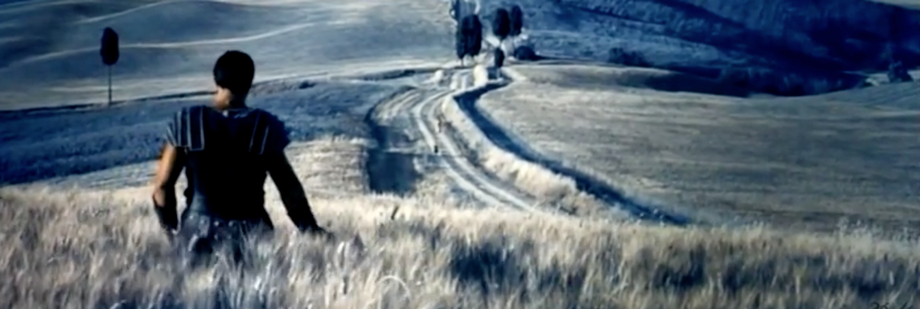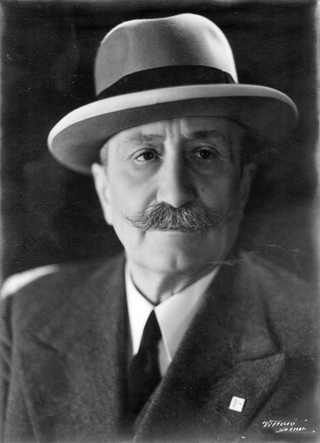
Podcast: Play in new window | Download (Duration: 20:09 — 16.4MB)
Subscribe: Google Podcasts | Spotify | Android | RSS | More
 Today’s show is something of a departure; I’m talking about someone who is crucial to global food security and yet who is almost unknown.
Today’s show is something of a departure; I’m talking about someone who is crucial to global food security and yet who is almost unknown.
It’s true, as Jean-Henri Fabre, the French naturalist wrote, that “History … knows the names of the king’s bastards but cannot tell us the origin of wheat.” Most people are blissfully unaware of the men and women who created the plant varieties that keep us fed. I say as much at the beginning of the show, when I guess that perhaps one in a hundred people can name a plant breeder, and that the name they’re most likely to come up with is that of Norman Borlaug. (The true stats, from a very small, self-selected sample, are somewhat different. Two out of 13 – about 15% – can name a plant breeder, although neither of the names they came up with was Borlaug’s.)
I thought Borlaug might be the most familiar plant breeder because he is credited as being the Father of the Green Revolution, for work that won a Nobel Peace Prize in 1970.
Nazareno Strampelli, an Italian plant breeder, exactly foreshadowed Borlaug’s work by about four decades. His wheats doubled production in Italy and beyond and were crucial to the second green revolution ushered in by Borlaug. He was born on 29 May 1866, 150 years ago as I write this. He deserves to be better known (as do all plant breeders, actually).
Notes
- There is very little about Strampelli’s life and work in English. I am indebted to Sergio Salvi for his books, articles and time, without which I could not have produced this episode.
- Music for the show graciously provided by Jon Fuller, aside from bits of soundtrack lifted from archive Italian newsreel.
- The banner image I grabbed from Ridley Scott’s Gladiator; it’s a little in joke for anyone who does know even a smidgen of the history of wheat.
- There is so much more to the story of Strampelli and the early days of plant breeding; would you be interested in an e-book?
https://media.blubrry.com/eatthispodcast/p/mange-tout.s3.amazonaws.com/2020/borlaug.mp3Podcast: Play in new window | Download (Duration: 29:38 — 27.3MB)Subscribe: Android | Google Podcasts | RSS | More
Norman Borlaug won the Nobel Peace Prize in 1970 for his work as a wheat breeder. The disease-resistant, dwarf wheats that he developed were the foundation of the Green Revolution, banishing global famine and turning India into a food-exporting nation. Many people have hailed Borlaug as a saint, a saviour of humanity. Others have blamed him for everything that is wrong with the modern global food system. The truth, naturally, lies somewhere in between, which is brought out in a new documentary about Borlaug and his work.
The documentary airs on PBS in the United States next week. I got the chance to see a preview and to talk to Rob Rapley, the writer, director and producer.
As our conversation makes clear, I hope, Borlaug never really imagined he was improving the lot of small subsistence farmers. If he wanted to do that, he would not have been working on wheat. But he was very clear that all he had done was to buy us time. This is what he said in his Nobel Lecture in December 1970:
He also said “I believe it is far better for mankind to be struggling with new problems caused by abundance rather than with the old problem of famine”.
My fear is that we have done neither. We have not used the time bought us by Borlaug and the Green Revolution wisely, nor have we any idea what to do with the abundance.
Notes
Rob Rapley’s documentary The Man Who Tried to Feed the World airs on 21 April in the American Experience strand on PBS; Here’s the link for the episode.
The book Rob Rapley mentions right at the start is Charles Mann’s The Wizard and the Prophet, about Norman Borlaug and William Vogt. Mann appears in the film too.
I cannot pass up the opportunity to promote an episode I made back in 2016. The True Father of the First Green Revolution is about Nazareno Strampelli, an Italian plant breeder whose work foreshadowed Borlaug’s by 40 years.
Small b&w photo of Borlaug with semi-dwarf wheats courtesy of National Portrait Gallery, Smithsonian Institution. Photo by Arthur Rickerby
And, we have a transcript. Sorry for the delay.
Cover (and main) photo shows Norman Borlaug behind the wheel of a combine harvester with the Mexican field technicians who contributed to seed production in the winter at Ciudad Obregón, Sonora, northern Mexico, c. 1952. Photo credit: CIMMYT.
Banner photo shows Borlaug in the field at what is now CIMMYT’s CENEB station (Campo Experimental Norman E. Borlaug, or The Norman E. Borlaug Experiment Station), near Ciudad Obregón, Sonora, northern Mexico, in 1961. Note that the wheat is shoulder high, not a semi-dwarf variety (unless they are on their knees, which I doubt). Photo credit: CIMMYT
Huffduff it
In 1966, farmers — 2359 of them — came to the International Rice Research Institute from all over the Philippines, to get seeds of IR8 rice, which had double the yield potential of existing varieties. Achieving that potential usually required nitrogen fertilizer, but fertilizer actually decreased yield of earlier varieties (Rice Today v. 5 p.36).
Norman Borlaug got the Nobel Prize for similar results with wheat a few years earlier, so why is Peter Jennings, the plant breeder who developed IR8, not equally famous? I think Jennings is still alive, but the Nobel Committee had better hurry.
I’m afraid my book, Darwinian Agriculture, perpetuates this injustice. I devote most of page 121 to Norman Borlaug and the Japanese and American plant breeders (Gonjiro Inazuka and Orville Vogel) who were the proximate source of the short-stemmed materials that were key to the high yield of Borlaug’s varieties. Some of the key genes apparently came from wheat varieties developed by the Italian plant breeder, Nazareno Strampelli, 30 years earlier [1], as discussed in this podcast. I neglected to name Peter Jennings in the main text of my book, although I do cite one of his papers, which showed that IR8 was less competitive than older, lower-yielding varieties [2].
Tradeoffs between yield potential and competitiveness are a major theme of my book. Although tradeoffs are now a central theme in evolutionary biology, I got the idea from a 1968 paper by Colin Donald [3], to which I was introduced by my postdoctoral mentor, the late Bob Loomis, author (with David Connor and Ken Cassman) of Crop Ecology.
So I’m standing on Donald’s shoulders, with a boost from Loomis, but whose shoulders did Donald stand on? Donald cites several papers by Jennings, including a paper that correctly identified traits he thought would be key to high yield potential in rice, including short stems and erect leaves [4]. Jennings then proceeded to make a rice variety with those traits, through crossing and selection, and the result was IR8. Donald also cites two technical bulletins by Akiro Tanaka, who Jennings credits (in this interesting interview) with helping him design IR8.
What other shoulders did Jennings stand on? Well, he cites papers by S.A. Tsunoda, who identified short stems and erect leaves as key to high yield in sweet potato, soybean, and rice [5]. Neither Donald nor Jennings cite Borlaug, who doesn’t seem to have published much, but Donald does cite a paper by Vogel et al. on semi-dwarf wheats that Borlaug used.
The value of short stems may have been widely recognized at the time. A historical account in the International Rice Research Institute’s magazine, Rice Today, quotes plant breeder Henry Beachell as advising Jennings to “be on the lookout for a dwarf rice,” and says that IRRI’s first Director, Robert Chandler, was calling for a short stem as early as 1962 [6].
Donald, though, seems to have been the first to generalize from specific traits to a tradeoff “between the competitive ability of cultivars on the one hand, and their capacity for yield in pure culture on the other.” [3] For example, Jennings mentions prolific tillering in his interview as a positive trait, whereas Donald suggests fewer stems per plant (maybe only one) as a route to increased yield potential. Plants with fewer stems would need to be grown closer together to capture all available sunlight as soon as possible, so this trait would probably need to be combined with increased density (more plants per square meter) and increased uniformity (less distance between rows but greater distance between plants within a row). Jacob Weiner has shown that this combination also helps to suppress weeds, because weeds encounter crop plants earlier, when the crop’s larger seed reserves give them a competitive advantage [7]. This is not how rice is grown now, apparently. This time-lapse movie shows lots of space between rows for much of the growing season, so a lot of sunlight is wasted, evaporating soil water rather than hitting leaves, where it would contribute to photosynthesis and yield.
In summary, both Borlaug and Jennings relied on other plant breeders or plant physiologists for materials and/or ideas. Their accomplishments, in turn, helped Donald develop his more-comprehensive approach. Maybe all three deserved Nobel Prizes.
As for the future, I argue in my book, in journal articles [8], and in talks that variations on Donald’s approach are still our most-promising route to increasing crop yield potential. See my main blog page for links to other talks, including a series at the International Rice Research Institute.
1] Salvi, Sergio et al. (2013) Nazareno Strampelli, the ‘Prophet’ of the green revolution. The Journal of Agricultural Science 151 :1-5
[2] Jennings, P. R., de Jesus, J., (1968) Studies on competition in rice. I. Competition in mixtures of varieties. Evolution 22 :119-124
[3] Donald, C. M., (1968) The breeding of crop ideotypes. Euphytica 17 :385-403
[4] Jennings, P. R., (1964) Plant type as a rice breeding objective. Crop Science 4 :13-15
[5] Tsunoda, S., (1959) A developmental analysis of yielding ability in varieties of field crops. II. The assimilation system of plants as affected by the form, direction, and arrangement of single leaves. Japanese Journal of Breeding 9 :237-244
[6] Hargrove, T., Coffman, W.R., (2006) Breeding History. Rice Today 5 :34-38
[7] Weiner, J. et al. (2001) Suppression of weeds by spring wheat Triticum aestivum increases with crop density and spatial uniformity. J. Appl. Ecol. 38 :784-790
[8] Denison, R. F., (2015) Evolutionary tradeoffs as opportunities to improve yield potential. Field Crops Res. 182 :3-8
Share this:
Twitter
Facebook
Google
Like this:
Like Loading…
Related
[…] http://www.eatthispodcast.com/the-true-father-of-the-first-green-revolution/ […]
What is the in joke about the Gladiator shot? It actually looks more like a field of barley. In some scenes you can see tram lines, which are a modern controlled traffic invention, but film producers would not likely know that.
Thanks Ben. I hadn’t noticed the tramlines. I’ll have to look for them next time I watch the film.
The in joke is only that the wheat is clearly a modern, uniform, semi-dwarf variety. If it had been a Roman wheat, his hand would probably have had to be at shoulder height, and we might not even have seen the top of his head.
Yes.